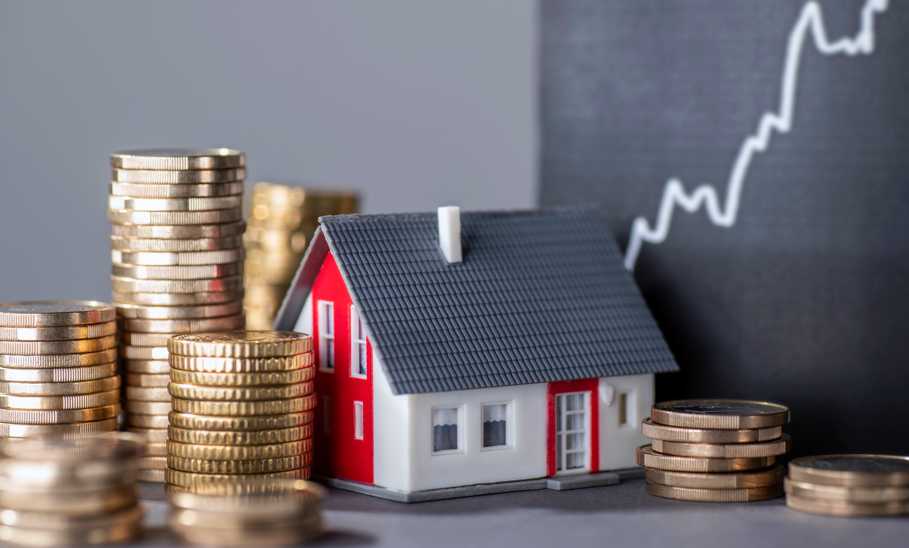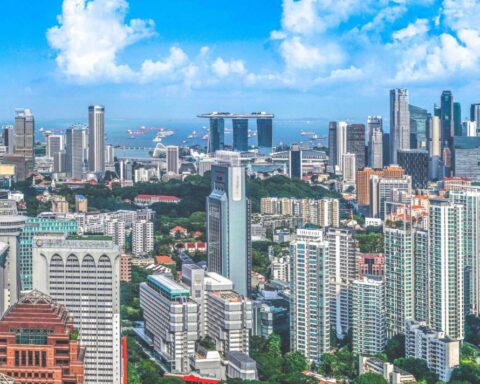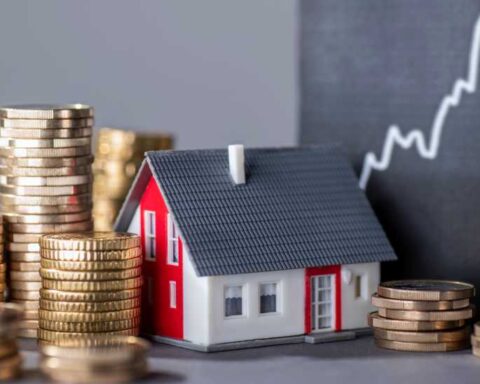The global real estate landscape is entering a dynamic new phase, and investors are once again scanning international markets for high-growth opportunities. As the post-inflation recovery stabilizes and interest rates gradually ease, a new wave of activity is reshaping both mature and emerging markets. Many investors are turning toward cities with strong rental demand, favorable taxation, and sustainable development models—while proven hubs like Dubai continue to dominate due to their unmatched ROI potential and influx of off-plan properties in Dubai across various budget segments.
1. The Global Investment Climate ─ What 2026–27 Will Look Like
Over the past few years, global property markets have weathered unprecedented volatility—from inflationary spikes to unpredictable monetary policy. However, 2026 marks the start of a more predictable environment. Inflation levels across North America, Europe, and Asia are cooling, encouraging central banks to adopt more flexible interest-rate strategies. As borrowing costs improve, cross-border real estate investment is expected to surge again.
But 2026–27 will not be defined by a single market. Instead, it will be shaped by a multi-polar investment landscape. Secondary cities in Asia-Pacific, developing markets in Africa, and stable European capitals are all showing renewed strength. Tech-driven property sectors, sustainability-focused developments, and mixed-use communities will become central investment pillars.
Key shifts driving global recovery include:
- Improved affordability in previously overheated markets
- Growing demand for flexible, smart, and green living spaces
- Population growth in emerging economies
- A rise in rental-driven investment strategies
- Stronger currency stability in traditionally volatile regions
A distinctive trend for 2026–27 is the shift from speculative purchases to data-driven investing. Investors today look closely at rental yield, tax efficiency, long-term capital appreciation, and government support before entering any market.
2. What Makes a Market Investment-Ready in 2026?

Not every fast-growing city is investment-ready. What investors seek today is long-term viability supported by strong fundamentals:
Consistent Price Appreciation
Cities showing annual price appreciation between 6–10%, such as Dubai, Nairobi, and parts of Southeast Asia, are attracting global capital due to their robust end-user demand and infrastructure expansion.
Strong Rental Yield Potential
Markets offering rental yields above 6% are especially appealing. Cities like Tbilisi, Manila, and Panama City are outperforming traditional property hubs due to rising tourism and expanding expatriate populations.
Affordability & Lower Entry Points
Property affordability continues to be a defining feature of emerging markets. Investors gain access to larger living spaces and better long-term ROI in cities like Nairobi, Mexico City, and Tbilisi compared to high-cost markets such as London, Sydney, or San Francisco.
Transparent Legal and Ownership Policies
Countries that offer simplified ownership rights, secure registration processes, and favorable residency programs tend to attract the highest long-term foreign investment. Dubai, Portugal, Malaysia, and Georgia currently lead this category.
Stable Taxation Frameworks
Low or zero property taxes significantly enhance net returns. Among all global hubs, the UAE stands out for offering zero property tax, which greatly boosts rental yield and capital appreciation margins for investors.
3. The Top Global Real Estate Markets for 2026–27
As global demand shifts towards cities that blend affordability, infrastructure development, and long-term growth, several markets are poised to outperform others in 2026–27.
Dubai (UAE) – The Consistent Outperformer
Dubai maintains its position as a global real estate powerhouse. The emirate continues to outperform due to its stable currency (pegged to the USD), high-quality infrastructure, and government-driven initiatives.
- Average ROI: 8–10%
- Rental Yield: 7–9%
- Market strengths: Zero property tax, global connectivity, strong expat demand
- Drivers of growth: Golden Visa policies, large-scale infrastructure expansion, and strong demand for luxury living
Dubai’s balanced pipeline of residential and commercial projects ensures stable pricing and continued investor confidence. The influx of multinational corporations, digital nomads, and long-term residents supports sustained demand across both ready and off-plan markets.
Lisbon (Portugal) – Stability with Steady Appreciation
Lisbon has emerged as Western Europe’s most stable real estate market. Investors seeking sustainable returns and long-term capital preservation find Lisbon appealing due to its regulatory transparency and growing tourism sector.
Miami & Austin (USA) – The Tech-Driven Frontier Markets
Miami’s position as a financial and luxury tourism hub, combined with Austin’s tech-driven boom, makes both cities prime choices for North American investment in 2026–27.
Tbilisi (Georgia) – The Undervalued Investment Gem
Tbilisi is rapidly becoming a favorite for global investors due to its low entry prices, simplified foreign ownership laws, and strong rental demand.
Nairobi (Kenya) – Africa’s Fastest-Rising Property Market
Nairobi’s middle-class expansion and government-backed infrastructure investments position the city as a promising long-term destination for residential and commercial properties.
4. Why Dubai Continues to Lead the Global Real Estate Market

Among all major markets, Dubai stands out as the most future-ready investment destination. Its combination of investor-friendly regulations, smart infrastructure, and strong demand gives it a competitive edge unmatched by many developed cities.
High Liquidity & Strong Absorption Rates
Properties in Dubai sell significantly faster than in major global hubs. High demand from expatriates and continuous migration ensures short resale cycles and fast return on investment.
Zero Property Tax Policy
A major incentive that continues to drive foreign interest is Dubai’s zero property tax framework. Investors keep 100% of their rental income, significantly boosting net yields.
Golden Visa & Long-Term Residency
Demand for premium properties surged as more investors sought eligibility for the UAE Golden Visa. This has boosted luxury sales and pushed developers to launch innovative, smart-living communities.
Sustainable & Smart Developments
Dubai is heavily investing in sustainable real estate—AI-powered buildings, green-certified developments, and energy-efficient infrastructure. These properties often command higher rental premiums and long-term appreciation.
Commercial, Hospitality & Digital Economy Growth
The rise of AI hubs, fintech companies, and remote-work communities is driving demand for flexible offices, co-living spaces, and smart homes. This multi-sector expansion creates diversified opportunities across residential, hospitality, and commercial verticals.
In this environment, partnering with the best real estate agency in Dubai becomes crucial for navigating off-plan launches, high-demand rental areas, and emerging neighborhoods that promise superior long-term returns.
5. Emerging & Affordable Markets to Watch in 2026–27
Several cities continue to offer exceptional growth for investors willing to explore outside traditional hubs:
Tbilisi
Fast growth, low prices, high rental yields—ideal for first-time global investors.
Nairobi
A fast-urbanizing ecosystem with strong end-user demand and rising expat interest.
Mexico City
Affordable entry points, tourism inflow, and a growing digital economy.
Budapest
Central Europe’s most balanced mix of affordability, rental demand, and cultural attractiveness.
These markets are still in early growth phases, giving investors a chance to enter before further global attention drives prices upward.
6. Investment Strategies for the 2026 Global Market

To maximize returns in 2026–27, investors should consider a hybrid approach:
Geographic Diversification
Balancing investments between high-growth emerging markets (Tbilisi, Nairobi) and stable hubs (Dubai, Lisbon) provides both security and upside potential.
Asset Type Diversification
Combining residential, commercial, and hospitality properties spreads risk and ensures steady cash flow.
Off-Plan Investing
Off-plan projects, especially in Dubai and Southeast Asia, offer flexible payment plans, low entry prices, and strong capital appreciation upon handover.
Data-Driven Decision Making
Analyzing rental yield, supply-demand trends, government incentives, and infrastructure development ensures well-informed investment choices.
7. 2027 and Beyond ─ Where Global Real Estate Is Headed
Looking ahead, the next major wave of real estate transformation will be shaped by:
- AI and data center infrastructure
- Green and sustainable property developments
- Blockchain-powered property transactions
- Tech-integrated smart cities
- Mixed-use urban ecosystems
Cities already moving in this direction—Dubai, Singapore, Austin, and Kuala Lumpur—are expected to outperform global averages in both rental yield and long-term appreciation.
Conclusion
The global real estate landscape for 2026–27 presents a compelling mix of stability, affordability, and high-growth potential. Whether you’re targeting emerging markets or established investment hubs, the opportunities are vast. Dubai continues to lead globally due to its tax-free environment, investor-friendly policies, sustainable development approach, and booming off-plan sector. Meanwhile, cities like Tbilisi, Nairobi, Lisbon, and Miami offer diverse avenues for returns depending on investor goals.
For anyone seeking strong rental yield, long-term capital appreciation, or a secure global asset, 2026–27 offers one of the most promising investment climates in years.









